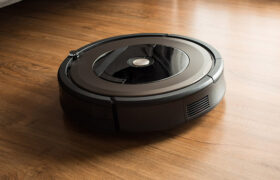Introduction
As we age, performing daily chores becomes more difficult, and cleaning can be particularly challenging for senior citizens and those with physical disabilities. Fortunately, advancements in technology have made it possible for robotic vacuums and moppers to take over the labor-intensive task of cleaning floors. These devices are a valuable asset to individuals who struggle to keep their homes clean, improving both their quality of life and independence. In this blog post, we will discuss the need for robotic vacuums and moppers, particularly for senior citizens and the physically disabled.
Physical Limitations and Challenges
Many senior citizens and individuals with physical disabilities face significant challenges when it comes to cleaning. They may have limited mobility, making it difficult or impossible to move around furniture or reach high surfaces. They may also experience joint pain, muscle weakness, or fatigue, making it physically taxing to use traditional cleaning equipment. Additionally, respiratory conditions like asthma or COPD can be exacerbated by exposure to dust and allergens commonly found on floors.
For these individuals, cleaning floors can be a daunting and exhausting task, leading to a decrease in quality of life and an increased risk of falls and injuries. Robotic vacuums and moppers can help address these issues by providing an automated and efficient solution for cleaning floors.
Robotic Vacuums
Robotic vacuums have been around for over two decades, but recent advancements in technology have significantly improved their performance and features. These devices use sensors and algorithms to navigate around a room, avoiding obstacles and adjusting their cleaning pattern as needed. Some models can even be controlled through a smartphone app, allowing users to start and stop cleaning sessions remotely.
One of the most significant benefits of robotic vacuums is their ability to clean floors without human intervention. This means that individuals with physical limitations can simply set the device to clean and let it do its work, without having to bend down or move furniture. Additionally, because robotic vacuums are typically small and lightweight, they can easily fit under furniture and into tight spaces, effectively cleaning areas that would be difficult or impossible to reach with a traditional vacuum cleaner.
Another benefit of robotic vacuums is their efficiency. These devices are programmed to clean in a systematic pattern, ensuring that every inch of the floor is covered. They can also detect areas that require more cleaning, such as high-traffic zones or areas with pet hair, and adjust their cleaning accordingly. This means that floors are thoroughly cleaned, reducing the risk of dust and allergens that can exacerbate respiratory conditions.
Robotic Moppers
While robotic vacuums are excellent for cleaning floors, they are not designed to tackle more stubborn dirt and grime, such as spills or stains. This is where robotic moppers come in. These devices use advanced cleaning technology to scrub floors and remove dirt and grime, making them an excellent complement to robotic vacuums.
Like robotic vacuums, robotic moppers use sensors and algorithms to navigate around a room, avoiding obstacles and adjusting their cleaning pattern as needed. Some models can also be controlled through a smartphone app, allowing users to customize the cleaning settings and schedule cleaning sessions.
One of the primary benefits of robotic moppers is their ability to clean floors without the need for physical exertion. This is particularly beneficial for senior citizens and individuals with physical disabilities, who may find it challenging to scrub floors manually. Robotic moppers also use less water and cleaning solution than traditional mopping methods, reducing the risk of slips and falls due to wet floors.
Another benefit of robotic moppers is their ability to effectively remove dirt and grime from floors. These devices use advanced cleaning technology, including rotating pads and cleaning solutions, to scrub floors and remove stubborn stains. This means that floors are not only clean but also disinfected, reducing the risk of illness and infection.
Conclusion
Robotic vacuums and moppers offer a valuable solution for individuals with physical limitations, particularly senior citizens and those with physical disabilities. These devices provide an automated and efficient solution for cleaning floors, reducing the physical strain and effort required to maintain a clean home.
Robotic vacuums are particularly beneficial for individuals with limited mobility, as they can easily navigate around furniture and tight spaces, thoroughly cleaning floors without the need for human intervention. Robotic moppers, on the other hand, provide an effective solution for removing stubborn dirt and grime, making them an excellent complement to robotic vacuums.
Additionally, both robotic vacuums and moppers are beneficial for individuals with respiratory conditions, as they reduce the risk of dust and allergens that can exacerbate symptoms. They are also beneficial for individuals with weakened immune systems, as they can effectively disinfect floors, reducing the risk of illness and infection.
While the initial cost of a robotic vacuum or mop may be higher than traditional cleaning equipment, the long-term benefits, particularly for individuals with physical limitations, make them a worthwhile investment. By reducing the physical strain and effort required to maintain a clean home, these devices improve both quality of life and independence, allowing individuals to live comfortably in their homes for longer.
In summary, the need for robotic vacuums and moppers, particularly for senior citizens and the physically disabled, is significant. These devices offer an efficient and effective solution for maintaining a clean home, reducing the physical strain and effort required for cleaning floors. With advancements in technology and increased accessibility, robotic vacuums and moppers are becoming more accessible and affordable, making them an excellent investment for anyone looking to improve their quality of life and independence.
